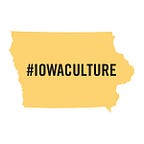90 Years Later, Hoover-Ball is Still in Play
It’s hard to imagine the Washington bigwigs rising each morning to exercise on the White House lawn these days, but there was a time when that was part of the routine.
President Herbert Hoover and several members of his cabinet and the Supreme Court tossed around a medicine ball six days a week, rain or shine. They played from seven o’clock until a factory down by the Potomac River blew its whistle half an hour later.
The sport was a popular tradition during Hoover’s four years as president, from 1929 to 1933, and for the past three decades in West Branch, where Hoover grew up. The town hosted the 30th annual Hoover-Ball National Championships during Hoover Hometown Days the first weekend in August.
Most years, more than 50 teams from several states show up each summer with tailgating tents, picnic baskets and coolers full of “whatever beverage cools them off,” Hoover Presidential Foundation spokesman Brad Reiners said. “The smart ones drink Gatorade and water” — especially since the event lasts eight or nine hours.
Even the far-flung Hoover descendants come to celebrate the quirky sport their famous forefather invented almost 90 years ago.
Hoover was on a goodwill trip to South America shortly after his election, in 1928, when he spotted some sailors tossing around a soft 9-pound medicine ball aboard the U.S.S. Utah. He jumped in for a few rounds of a keep-away game called Bull in the Ring and thoroughly enjoyed it.
So he and his physician, Dr. Joel Boone, cooked up a similar game back in Washington, where teams of two to four players heaved a ball over an 8-foot net. A New York Times reporter dubbed it “Hoover-Ball” in 1931.
“It required less skill than tennis, was faster and more vigorous, and therefore gave more exercise in a short time,” Hoover wrote in his memoirs.
The 54-year-old president instituted the ritual just four days after his inauguration and soon lost 20 of the pounds he’d packed on during the campaign.
“Getting daily exercise to keep physically fit is always a problem for Presidents,” he wrote. “Once the day’s work starts there is little chance to walk, to ride or to take part in a game. Taking walks or rides early in the morning is a lonesome business, and the inevitable secret service guard when the president leaves the White House grounds is not enlivening company.”
A smattering of VIPs gathered on the South Lawn each morning, even on holidays, and moved indoors only two or three times during severe storms. The president canceled a game only once, on a day he woke early to write a message to the Senate.
An early home-movie at the Herbert Hoover Presidential Library and Museum shows the players romping around in sport coats and knickers while Hoover’s German shepherd looks on. You can see the president himself gamely tossing the ball in dark slacks and a brown cardigan. (For years staffers at the library and museum thought the film was black and white, but archivist Lynn Smith recently discovered it was shot in Kodacolor. She sent it off for restoration and it was returned in December, offering a full-color glimpse at first lady Lou Hoover’s dresses and the Rose Garden. It was “like opening a door and going through a time portal,” Smith said.)
At the museum, you can also see the silver cigar box the so-called “Medicine Ball Cabinet” gave the president at the end of his term. They had it engraved with their signatures and an artistic rendering of the ball court, complete with dogs.
The trophy at the national championships isn’t quite as ornate, but the game means just as much — or more — to its die-hard players.
“It’s just a great game,” said Mike Johnston, 53, of West Branch, who has competed in the tournament for the last 28 years. His teams have placed second or third several times, but he has yet to win the whole thing.
“It’s very competitive,” he said. “You try to throw it at the weakest link. Sometimes you’ll throw it at another guy, just to give ’em a break — but not if you want to win.
“But you know, nobody fights,” he added. “As President Hoover would have said, ‘It’s an honest man’s game.’ If you argue about a point, then you play it over.”
Teams spend the morning in round-robin competition before officials draw up a 16-team bracket around noon. And for the second year now, the Iowa Games is gave T-shirts to all the participants and medals to the winning teams in three divisions — for men, women and youth.
“It’s definitely a workout,” said Matt Schaefer, another archivist at the museum and library. “You’ve got to be strong. You’ve got to be big. You’ve got to have a lot of endurance.”
And you’ve got to have a good team name. The list of past champions includes the Men of Mayhem, the Heave Ho’s and the Marshmallow Pterodactyls.
Reiners, at the foundation, said he’d like to see even more play the sport and spread it farther afield. He and his colleagues are on an outreach team that scrimmages at various public events, including the main Iowa Games in Ames, and they recruit passersby to join.
He also invited all the presidential candidates to play during the run-up to the Iowa Caucuses to prove they were fit enough for the job.
“We didn’t get any takers,” he said. “Nobody wants to be seen getting smashed in the face.”
